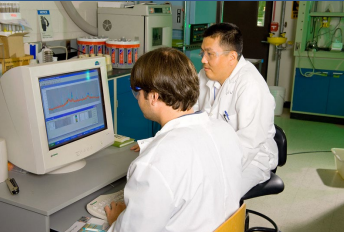Fact Sheet: Extraction and Determinative Methods

March 2025
This fact sheet describes changes to the federal PCB regulations at 40 Code of Federal Regulations (CFR) Part 761 that went into effect on February 26, 2024, which update the test methods available for extraction and determination of PCBs used to characterize and verify the cleanup of PCB waste under the Toxic Substances Control Act (TSCA) (Volume 88 of the Federal Register page 59662; August 29, 2023). Table 1 of this fact sheet presents the current list of available extraction and determinative methods in the PCB regulations.
There are two important sources of test methods described in this fact sheet. The first source is SW-846, also known as the Test Methods for Evaluating Solid Waste: Physical/Chemical Methods Compendium, which is EPA’s collection of methods for use in complying with the Resource Conservation and Recovery Act (RCRA). SW-846 is organized into chapters providing guidance on how to use the methods and groups of methods, called “series,” which are organized by topic. The methods change over time as updates are published to keep up with evolving analytical and measurement needs.
The second source is the Clean Water Act (CWA) Analytical Methods, which are laboratory analytical methods, or test procedures, published by EPA that are used by industries and municipalities to analyze the chemical, physical, and biological components of wastewater and other environmental samples.
SW-846 and CWA methods go through an extensive review and validation process before they are published and made available.
On this page:
- Added Extraction Methods for PCBs
- Updated and Limited Use of Ultrasonic Extraction for PCBs
- Updated Determinative Methods for PCBs
- Use of Alternative Extraction and Determinative Methods for PCBs
- Table 1 - Extraction and Determinative Methods for PCBs
- Additional References
Added Extraction Methods for PCBs
EPA has added the following extraction methods from SW-846 to the PCB regulations:
For the extraction of PCBs from solid matrices:
- Method 3541 (Automated Soxhlet Extraction),
- Method 3545A (Pressurized Fluid Extraction), and
- Method 3546 (Microwave Extraction).
For the extraction of PCBs from aqueous matrices:
- Method 3510C (Separatory Funnel Liquid-Liquid Extraction),
- Method 3520C (Continuous Liquid-Liquid Extraction), and
- Method 3535A (Solid-Phase Extraction).
Updated and Limited Use of Ultrasonic Extraction for PCBs
EPA has replaced SW-846 Method 3550B (Ultrasonic Extraction) with the current version, Method 3550C. EPA has also limited use of Method 3550C to surface wipe samples only, due to low bias recovery in other types of solid matrices.
Updated Determinative Methods for PCBs
EPA has replaced SW-846 Method 8082 (PCBs by Gas Chromatography) with the current version, Method 8082A. EPA has also replaced CWA Method 608 (Organochlorine Pesticides and PCBs) with the current version, Method 608.3 (Organochlorine Pesticides and PCBs by GC/HSD).
Use of Alternative Extraction and Determinative Methods for PCBs
In certain cases, EPA may approve the use of alternative extraction or determinative methods in lieu of the methods specifically prescribed in 40 CFR Part 761. A person may either conduct a comparison study in accordance with the requirements of 40 CFR Part 761, Subpart Q or submit an appropriate written application (i.e., under Sections 761.60(e), 761.61(c), 761.62(c), or 761.79(h)) requesting an approval from EPA to use an alternative extraction or determinative method for PCBs.
Applications involving activities occurring within a single Region must be submitted to the EPA Regional Administrator in the Region where the activity is proposed to take place. Applications involving activities occurring in more than one Region must be submitted to the Director, Office of Resource Conservation and Recovery.
Table 1 - Extraction and Determinative Methods for PCBs
| Source | Method ID | Publication Year | Method Type | Method Name | Final Change |
|---|---|---|---|---|---|
| SW-846 | Method 3510C | 1996 | Extraction | Separatory Funnel Liquid-Liquid Extraction | Added to Regulations |
| SW-846 | Method 3520C | 1996 | Extraction | Continuous Liquid-Liquid Extraction | Added to Regulations |
| SW-846 | Method 3535A | 2007 | Extraction | Solid-Phase Extraction (SPE) | Added to Regulations |
| SW-846 | Method 3540C | 1996 | Extraction | Soxhlet Extraction | Retained in Regulations |
| SW-846 | Method 3541 | 1994 | Extraction | Automated Soxhlet Extraction | Added to Regulations |
| SW-846 | Method 3545A | 2007 | Extraction | Pressurized Fluid Extraction | Added to Regulations |
| SW-846 | Method 3546 | 2007 | Extraction | Microwave Extraction | Added to Regulations |
| SW-846 | Method 3550C | 2007 | Extraction | Ultrasonic Extraction | Replaces Method 3550B, and Limited to Wipe Samples Only |
| SW-846 | Method 8082A | 2007 | Determinative | Polychlorinated Biphenyls (PCBs) by Gas Chromatography | Replaces Method 8082 |
| CWA | 608.3 | 2016 | Extraction and Determinative | Organochlorine Pesticides and PCBs by GC/HSD | Replaces CWA Method 608 |
Additional References
Disclaimer: The recommendations on this webpage do not impose legally binding requirements and will not be implemented as binding in practice. They do not impose any obligations on private parties, nor are they intended to direct the activities of any other federal, state, or local agency or to limit the exercise of their legal authority.
